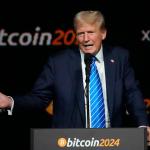In recent discussions surrounding the potential for a U.S. recession, concerns have emerged from various economic leaders, including President Trump and Commerce Secretary Howard Lutnick. The notion that the economy could be heading toward a downturn was sparked when Trump stated on Fox News that he “hates to predict things like that” but acknowledged a significant transitional period at play. Lutnick further added that Trump’s economic policies would still be “worth it,” even if they could lead to a recession.
Understanding what constitutes a recession is vital in navigating these uncertain economic waters. A recession is typically defined as a significant, persistent decline in economic activity across the economy. The most widely accepted measure is two consecutive quarters of negative economic growth, but there are broader indicators evaluated by the National Bureau of Economic Research (NBER). This non-profit organization assesses economic cycles by analyzing key variables, including employment levels, personal income, consumer spending, manufacturing sales, and industrial production.
For an event to be classified as a recession by the NBER, the decline in economic indicators must be marked, extensive, and sustained over time. It’s important to note that a downturn must not be confined to a specific sector; rather, it should be a widespread contraction affecting the larger economy.
At present, many economists believe a recession is not imminent. While job layoffs are rising, the overall U.S. labor market continues to exhibit resilience, adding jobs at a reasonable pace. Julia Pollack, the chief economist at career site ZipRecruiter, pointed out that four out of six key indicators monitored by the NBER suggest ongoing economic expansion. Ryan Sweet, chief economist at Oxford Economics, echoed that sentiment, indicating that while there is rising unease due to policy uncertainties and trade concerns, a recession is not on the immediate horizon.
Despite this optimism, there are emerging signs of weakness in the economy. Retail spending, which acts as a critical gauge of economic health, appears to be slowing down. Consumer confidence has also taken a hit, leading to rising fears of a potential recession. Pollack warns that decreased consumer spending concerns are particularly troubling, given that consumer expenditure forms the backbone of the U.S. economy. A squeeze on household budgets, coupled with wavering sentiment, means consumers are more exposed to economic shocks.
Sweet observed that traditional recession indicators are not flashing red. However, the weight of uncertainty surrounding trade, fiscal policy, and immigration hangs heavily over the economy, leading to concerns about potential downturns ahead.
The economic landscape of the U.S. is monitored closely for signs that may indicate a recession is on the horizon. An increase in job loss, or a jump in unemployment rates, are leading indicators that a recession could be approaching. In previous downturns, consumers have sharply curtailed spending, and businesses have reduced investments, leading to increased unemployment rates. Although the unemployment rate has recently ticked up from 4% to 4.1%, many economists note that this rate still remains low and that businesses continue to add jobs, which indicates a stable economic environment.
Monitoring jobless claims serves as another critical metric regarding potential economic distress. Currently, weekly jobless claims remain low, suggesting that the pace of layoffs has not reached alarming levels.
However, if a recession does occur, its impacts will likely be widespread. Economists assert that those who are most vulnerable tend to be entry-level workers, many of whom could be laid off first in challenging economic times. This trend disproportionately affects lower-wage workers and minorities who may find it difficult to secure employment during more stable economic periods.
Moreover, individuals carrying debt may find themselves at risk of foreclosure, exacerbating economic inequalities that often emerge during downturns. As noted by Alex Jacquez, of the Groundwork Collective, the individuals least fortunate in times of economic stability can suffer the most during downturns. This ongoing economic uncertainty underscores the deeper implications of recession, affecting those who have the least cushion to fall back on.
As the national economic landscape develops, it is essential to remain informed about both macroeconomic indicators and the personal impacts of potential changes. While signs are not indicative of a recession currently, the economic climate is in a state of transition filled with uncertainties.
Being attuned to these developments can empower individuals and businesses alike to better prepare for the challenges ahead. The conversation around the possibility of a recession may provoke anxiety for many, but by understanding the fundamentals of economic cycles, consumers can make more informed decisions during these unpredictable times.
In summary, while the U.S. economy currently shows signs of expansion rather than contraction, increased vigilance is necessary as various indicators and policy uncertainties linger. Understanding the ramifications of economic fluctuations is crucial as we navigate this evolving landscape together.
Source link







:max_bytes(150000):strip_icc()/GettyImages-2238127963-b114f56e83ca40b6979021ca94a9bb6e.jpg?w=150&resize=150,100&ssl=1)

